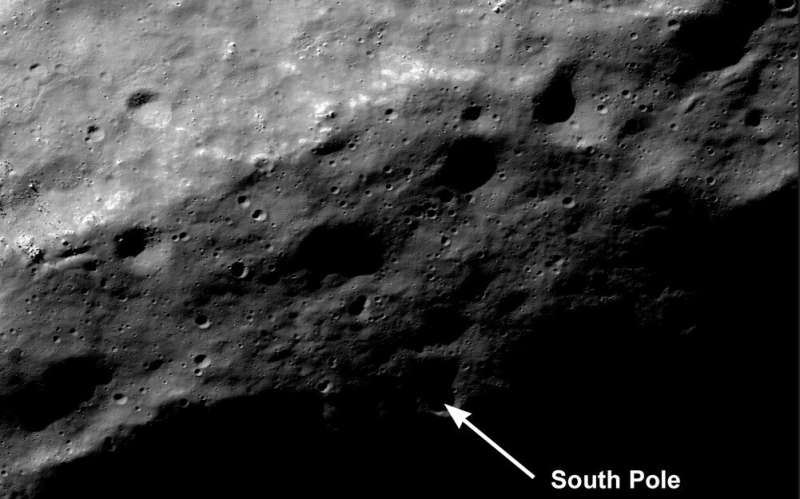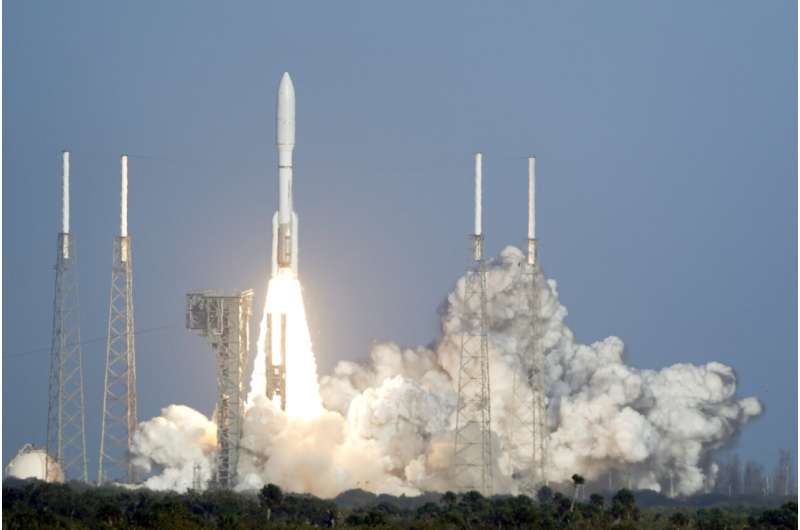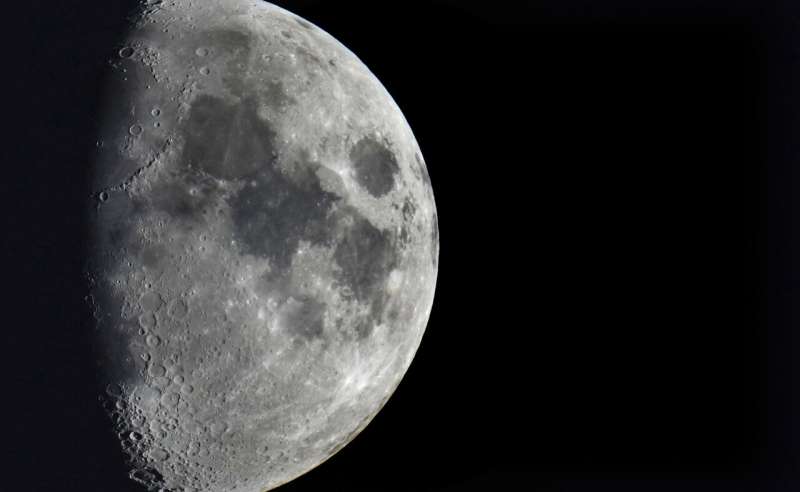
Copernical Team
Russia wants launch guarantees from Europe's Arianespace
 Russia's space agency on Wednesday demanded legal guarantees from Europe's Arianespace and OneWeb that satellites Moscow is set to launch this year will not be used for military purposes.
Roscosmos also said demanded the British government had to give up its stake in OneWeb, a global satellite communications company, because of "Britain's hostile position on Russia".
The statement from t
Russia's space agency on Wednesday demanded legal guarantees from Europe's Arianespace and OneWeb that satellites Moscow is set to launch this year will not be used for military purposes.
Roscosmos also said demanded the British government had to give up its stake in OneWeb, a global satellite communications company, because of "Britain's hostile position on Russia".
The statement from t The exact point of the moon's south pole

Since 2009, the Lunar Reconnaissance Orbiter (LRO) has been taking high-resolution pictures of the lunar surface. This data, along with the information from a laser altimeter mapping instrument has allowed scientists to create an incredibly detailed map of the moon. NASA says they can now confidently pinpoint any feature on the moon, including the exact location of its south pole.
Whenever humans return to the moon, a detailed "roadmap" will be extremely helpful for astronauts to accurately find their way.
Satellites support latest IPCC climate report

Human-induced climate change is causing dangerous and widespread disruption in nature, affecting the lives of billions of people around the world, according to the latest state of the climate report by the Intergovernmental Panel on Climate Change (IPCC) published this week.
The report utilises satellite observations as crucial input, including several long-term datasets of key aspects of the climate, known as Essential Climate Variables, generated via Europe’s leading research teams working as part of ESA’s Climate Change Initiative.
Future astronauts might be able to 3D print their own spacesuits and parts as needed

One of the best motivators to solve a problem is to experience it yourself. Dr. Bonnie Dunbar happened to have just such an experience. She is a former NASA astronaut and is now a professor of Aerospace Engineering at Texas A&M. While she was in the astronaut corps, she realized that some of her fellow astronauts couldn't fit in an extra vehicular activity suit—more commonly known as a spacesuit. So she decided not only to create one for the individuals with the original problem but to create a process by which any other astronaut launched on any future mission can have a spacesuit tailored to their own specific body. And now, her former employer (NASA) is funding her and her lab to complete a feasibility study of this customization process as part of the recently announced NASA Institute for Advanced Concepts (NIAC) program.
Dr. Dunbar's submission, known as The Spacesuit Digital Thread, received $175,000 to fund the research over the next nine months.
Revised flight plan brings change for Samantha

In May 2021 it was announced that ESA astronaut and Dragon Crew-4 mission specialist Samantha Cristoforetti would serve as Commander of International Space Station (ISS) Expedition 68a.
As part of normal vehicle scheduling, the Space Station flight programme was recently updated adjusting the upcoming crew rotation for Crew-4 and Crew-5, resulting in a shorter mission for Crew-4. ISS Expedition 68 will now take place after Samantha’s departure from the Station.
Weather satellite rockets to orbit to monitor US West

America's newest weather satellite blasted off Tuesday to improve wildfire and flood forecasting across the western half of the country.
Space junk on 5,800-mph collision course with moon

Sign Up to Fly with NASA Using the Flight Log Experience
 NASA Aeronautics is cleared for takeoff through 2022, and we invite you and your family, friends, and classmates to join us and share in exciting aeronautical events happening this year and beyond using the new Flight Log Experience.
These milestones include first flights of two new X-planes: the X-57 Maxwell and X-59 Quiet SuperSonic Technology (QueSST) aircraft.
The X-57 Maxwell is
NASA Aeronautics is cleared for takeoff through 2022, and we invite you and your family, friends, and classmates to join us and share in exciting aeronautical events happening this year and beyond using the new Flight Log Experience.
These milestones include first flights of two new X-planes: the X-57 Maxwell and X-59 Quiet SuperSonic Technology (QueSST) aircraft.
The X-57 Maxwell is Lockheed Martin to deliver 42 smallsats for SDA's Transport Layer
 The Space Development Agency (SDA) has awarded Lockheed Martin a prototype agreement with a potential value of approximately $700 million to design and build 42 small satellites. These satellites are part of Tranche 1, the initial warfighting capability of the agency's Transport Layer, which will connect space with other domains on Earth in a highly capable, networked environment of Joint All-Do
The Space Development Agency (SDA) has awarded Lockheed Martin a prototype agreement with a potential value of approximately $700 million to design and build 42 small satellites. These satellites are part of Tranche 1, the initial warfighting capability of the agency's Transport Layer, which will connect space with other domains on Earth in a highly capable, networked environment of Joint All-Do North Korea claims latest missile launch was spy satellite test
 North Korea said Monday that it successfully conducted a test of a "reconnaissance satellite" over the weekend in a launch of what the South Korean and Japanese militaries described as a ballistic missile.
The test helped "confirm the characteristics and working accuracy of high-definition photographing system, data transmission system and attitude control devices," according to a brief re
North Korea said Monday that it successfully conducted a test of a "reconnaissance satellite" over the weekend in a launch of what the South Korean and Japanese militaries described as a ballistic missile.
The test helped "confirm the characteristics and working accuracy of high-definition photographing system, data transmission system and attitude control devices," according to a brief re 



































